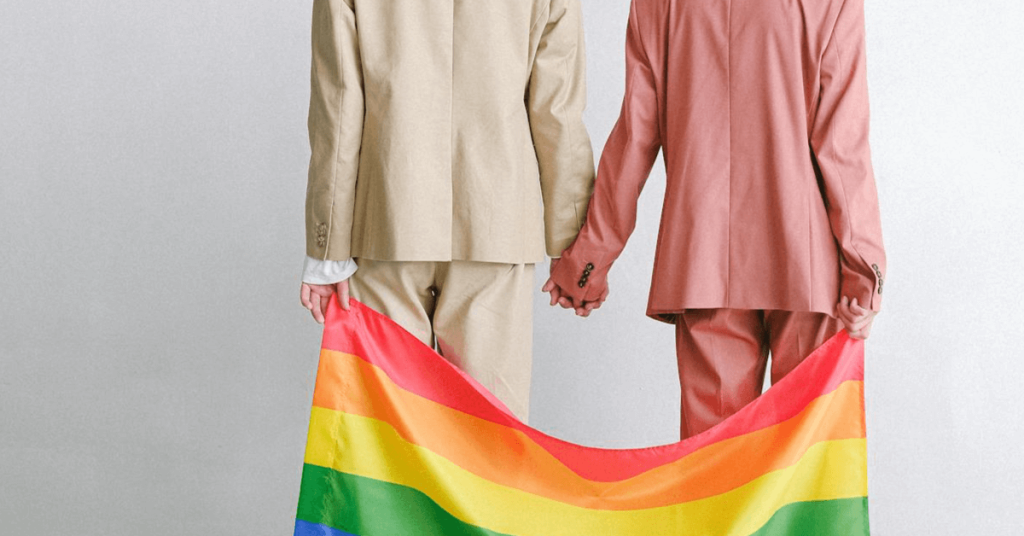Since achieving marriage equality, Australian same-sex couples can marry and divorce as they wish.
Same-sex marriage is recognised in 35 countries around the world.
The right to marry and divorce someone regardless of sex or gender was a long time coming in Australia. A couple in Perth is the first same-sex pair couple to go through a divorce.
Table of Contents
ToggleWhat is the Current Rate of Gay Divorce in Australia?
As of the most recent available data, the rate of gay divorce in Australia was reported as follows:
- In the year 2021, there were a total of 473 same-sex divorces recorded in Australia. This number comprised 306 female couples and 167 male couples.
- The same data set revealed 2,842 same-sex marriages in 2021, with female couples more likely to marry than male couples. The statistics indicated that male and female same-sex marriages break down at roughly the same rates.
- This figure of 473 same-sex divorces came after same-sex marriage was legalised in Australia in December 2017. It’s important to note that same-sex couples have only been able to marry in Australia since the start of 2018 legally.
- The overall number of divorces in Australia in 2021 was 56,244, among 89,164 marriages registered in the same year. This puts same-sex divorces at a small fraction of the total divorces for that year.
These statistics provide a baseline understanding of the current rate of gay divorce in Australia. However, it’s essential to recognise that this is a relatively new area of data collection, given the recent legalisation of same-sex marriage in the country.
Also read: How to Get a Divorce in Australia
How Common is Gay Divorce vs Gay Marriage?
To compare the prevalence of gay divorce to gay marriage in Australia, we can look at the available statistics:
- Gay Marriages: In 2021, there were 2,842 same-sex marriages registered in Australia. This represented about 3.2% of all marriages in that year. The number of same-sex marriages has fluctuated since legalisation in 2017, with a notable drop in 2020 and 2021, partly due to the COVID-19 pandemic.
- Gay Divorces: In the same year, there were 473 same-sex divorces recorded, with 306 involving female couples and 167 involving male couples. This was the first year for which such data was collected and represents a small fraction of the total divorces (56,244) in Australia for that year.
When comparing these figures, it’s clear that the number of gay marriages significantly exceeds the number of gay divorces. However, it’s important to consider several factors:
- Time Factor: Same-sex marriage was legalised in Australia only at the end of 2017. Therefore, many same-sex marriages have not been in existence long enough to fall within typical timeframes for divorce.
- Initial Increase in Marriages: Following the legalisation of same-sex marriage, there was likely an initial surge in marriages, as couples waiting to marry legally did so.
- Emerging Trends: Since same-sex marriage is relatively recent in Australia, the trends in divorce among these couples are still emerging. The full picture of how common gay divorce is in gay marriage will become more apparent over time as more data becomes available.
Are There Differences in the Process of Gay Divorce to Heterosexual Marriages?
The process and eligibility criteria for gay divorce in Australia are identical to those for heterosexual couples. This is because same-sex marriage has been legal in Australia since 2017, and both types of marriages are treated equally under the Family Law Act 1975.
Here’s the basic process:
- Separation: You must be separated for at least 12 months, either living separately or under the same roof (separation under one roof).
- Application: You can file for divorce individually (sole application) or jointly. An application form must be submitted to the Federal Circuit and Family Court of Australia along with a copy of your marriage certificate.
- Service: If applying solely, you must serve the divorce application to your partner through specific legal procedures.
- Court: If children are involved or the divorce is contested, you may need to attend a court hearing. Otherwise, the court usually finalises the divorce based on the application documents.
- Finalisation: Upon receiving the divorce order, you are officially divorced.
Important points to remember:
- This is a “no-fault” divorce system, meaning you don’t need to assign blame to either party for the marriage breakdown.
- Divorce does not automatically settle property or child custody arrangements. These must be addressed separately through negotiation, mediation, or court proceedings.
- Seeking legal advice from an expert family lawyer is recommended, especially if your divorce involves complexities.
How Are Overseas Same-Sex Marriages and Divorces Recognised in Australia?
In Australia, same-sex marriages and divorces that occurred overseas are recognised under specific conditions:
#1) Recognition of Overseas Same-Sex Marriages
After the legalisation of same-sex marriage in Australia in 2017, overseas same-sex marriages are recognised in Australia. This includes marriages that occurred before and after the change in Australian law. For the marriage to be recognised, it must have been valid under the laws of the country where it was performed.
#2) Restrictions on Remarrying in Australia
Couples who were married overseas cannot remarry in Australia unless there are doubts about the validity of their foreign marriage. In cases where couples wish to celebrate their union in Australia, they may opt for a different type of ceremony, such as a confirmation of vows ceremony, rather than a legal marriage ceremony.
#3) Recognition of Overseas Divorces
Same-sex divorces that occur overseas are also recognised in Australia. This recognition is similar to that for opposite-sex couples, where overseas divorces are considered valid under Australian law. This is important for same-sex couples who married overseas and later seek a divorce while residing in Australia.
#4) Divorce Eligibility in Australia for Overseas Marriages
For overseas married same-sex couples living in Australia, the standard Australian legal criteria for divorce apply. This includes the requirement of a 12-month separation period to demonstrate the irretrievable breakdown of the marriage.
#5) Implications for Legal Rights and Obligations
The recognition of both marriage and divorce affects various legal rights and obligations, including those related to property settlements, spousal maintenance, and parental responsibilities if there are children involved.
Need Expert Guidance on Gay Divorce?
At Justice Family Lawyers, we understand the unique challenges of going through a divorce. Our compassionate and knowledgeable team is dedicated to providing tailored legal support for the LGBTIQ+ community. Contact us for a consultation and ensure your rights are protected during this significant life transition. Let’s make your next steps clearer and fairer.
Principal of Justice Family Lawyers, Hayder specialises in complex parenting and property family law matters. He is based in Sydney and holds a Bachelor of Law and Bachelor of Communications from UTS.







1 thought on “Gay Divorce Rate: Latest Statistics After Legalisation in 2017”
Pingback: Marriage And Divorce Rate In Australia
Comments are closed.